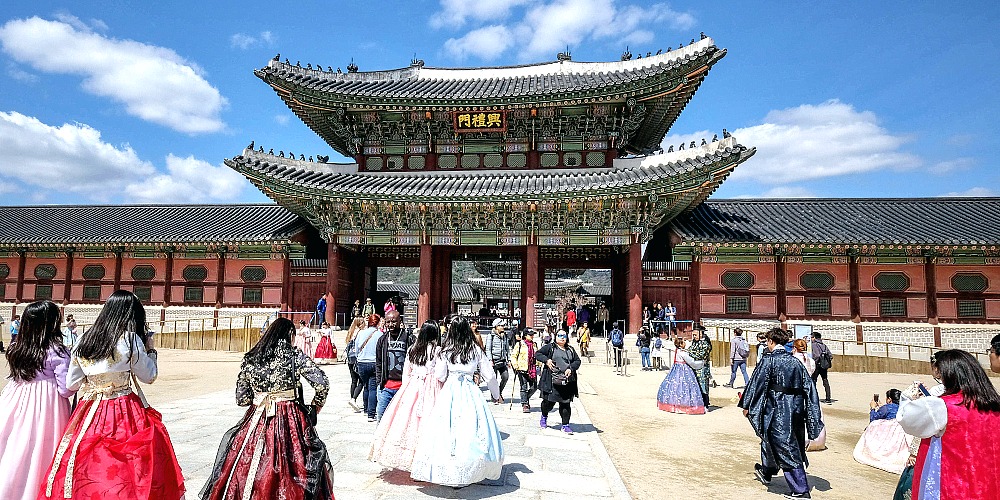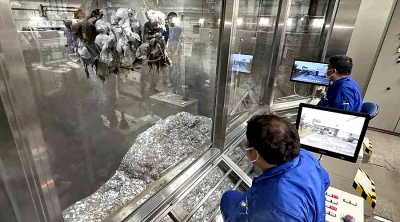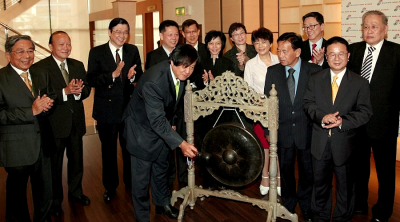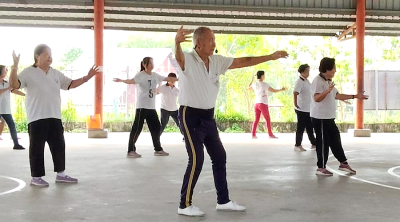A visit to Seoul is not complete without a walk in Bukchon.
For all the talk of commercialization and the heavy tourist impact, the rows of traditional Korean-style houses make it one of Seoul’s most unique cityscapes.
On a recent visit to the Bukchon Traditional Culture Center near Exit 3 of Anguk Station, I noticed a small but interesting change. The sign in front of the building explaining Bukchon now has the explanation in five languages: Korean, English, Chinese, Japanese and Thai.
The first four are commonly found in many tourist sites, but Thai marks an important departure from the established paradigm.
The history of language use on signs in tourist sites in South Korea reflects the changes in the source of foreign tourists over time.
After liberation, English became the most important foreign language in South Korea and up until the mid-1960s, the only foreign language used in signs and publications for foreign visitors.
After the Korean War, Americans were by far the most common foreign visitors. That changed in 1965 after South Korea and Japan established diplomatic relations.
Park Chung-hee was eager for foreign exchange and wanted to attract tourists from nearby Japan. From the late 1960s onward, Japanese began to appear as the third language on signs.
Busan and the historical cities of Gyeongju and Buyeo were particularly popular with Japanese tourists and information in Japanese was prevalent.
Chinese began to appear as a fourth language in the 2000s as South Korea’s interaction with China boomed after diplomatic relations were established in 1992.
In response to the surge in Chinese tourists in 2010s, new signs put Chinese third after Korean and English, bumping Japanese down to fourth place.
This is most sticking in the newly renovated galleries of the Gyeongju National Museum, which puts Japanese below Chinese.
And now there’s Thai. The addition clearly indicates that the number of Thai visitors to Bukchon has increased to a level that warrants information in their native language.
The city of Seoul runs the Bukchon Traditional Culture Center, so the change reflects a local government decision.

Seoul’s position as the capital and leading destination for foreign tourists makes it significant. It also raises several questions.
One obvious question is whether other languages should be added in the future.
Signs can get crowded, so adding a sixth language seems unlikely, but what if tourists from, say Indonesia, increase and exceed those from China, Japan or Thailand? Should Indonesian be added, or should it replace one of the existing languages?
Technology, particularly QR codes, offers a way to get around adding languages.
Instead, a one-line note in different languages followed by a QR code would give tourists access to information in various languages with crowding signs.
Signs at smaller tourist sites often have only Korean and English, so adding QR codes for several other languages would help reach more foreign tourists in their native languages without replacing existing signs.
Printed material in various languages could also augment signs.
Currently, except for the most commonly visited places, printed material is available only in Korean and English. Producing print material in different languages, however, may not be effective because people are so used to getting information on their phones.
Having a list of QR codes for information in various languages would be very helpful to tourists who cannot read Korean or English easily.
This leads to the question of maps. For younger people paper maps are relics from a time they have never experienced. They prefer GPS-equipped maps on their phones.
Older people do too, which leaves printed maps for collectors or those who are running low on battery power.
Local governments in South Korea enthusiastically produce maps in Korean, English and occasionally Chinese or Japanese.
The problem with these maps is most of them leave out Korean, which makes it hard for taxi drivers and others to interpret the destination.
If printed maps are to continue, they should be bilingual in Korean and the target foreign language.
Google Maps, the most common map app in the world, is bilingual in the language of the user and Korean. The convenience helps explain Google’s dominance.
Over time, moving tourist information may reduce the need for large signs altogether, which would help clean up overly complicated public spaces.
Some Buddhist temples, for example, have signs in front of every building in the temple complex which mars the historical atmosphere.
And finally, online information is easier to update and correct — both common issues in translation.
(Robert J. Fouser is former Associate Professor of Korean language education at Seoul National University.)
ADVERTISEMENT
ADVERTISEMENT








































